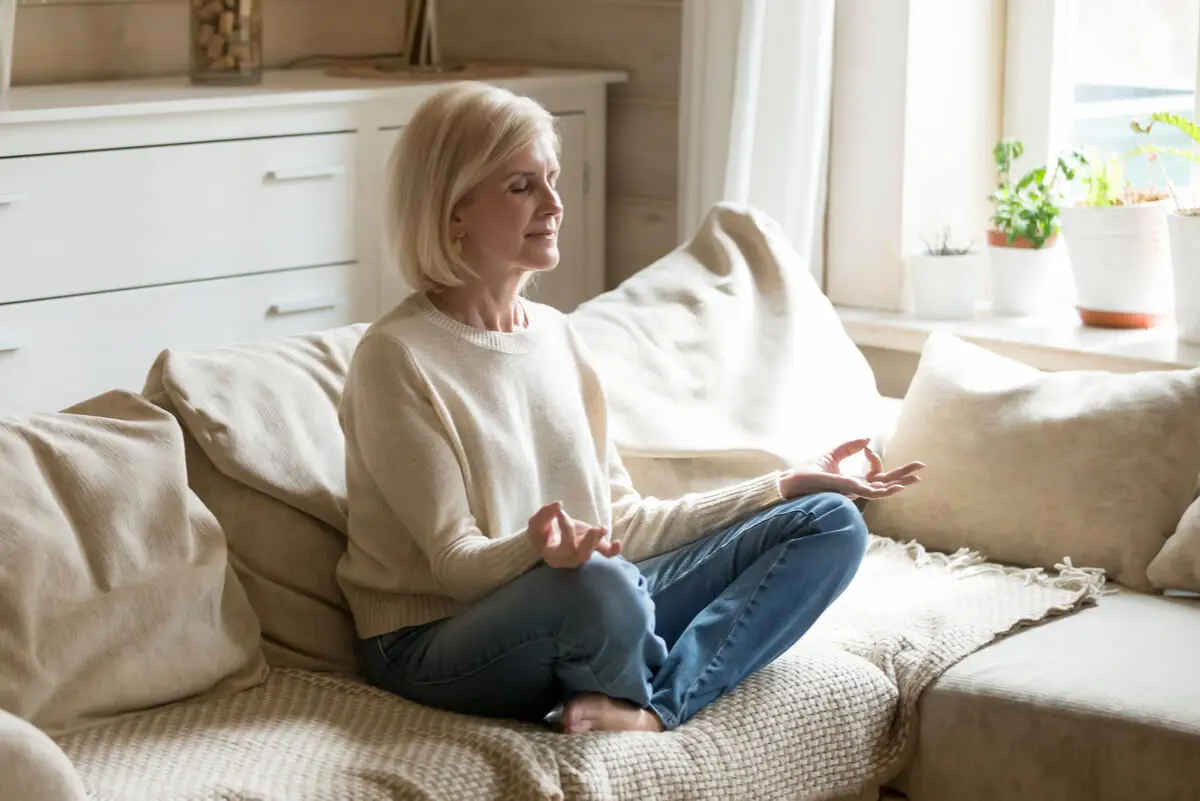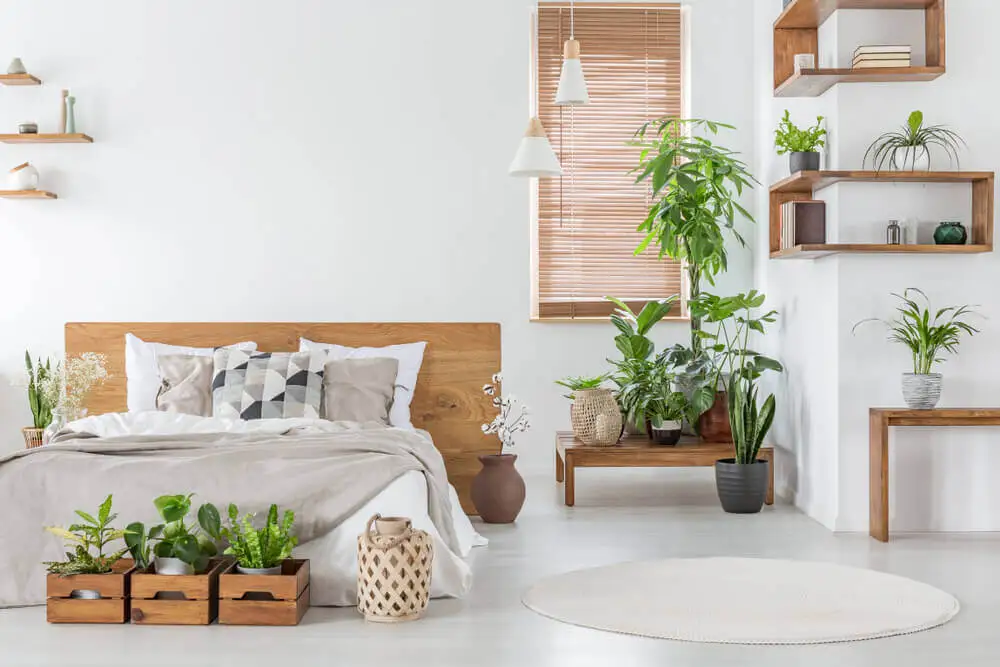Slow Deco: Learn What It Is and How to Apply It To Your Home

The slow movement promotes a lifestyle that prioritizes the slowing down of our daily rhythms. Although it emerged as a counterpoint to fast food, it’s a cultural trend that intervenes in different aspects. When it comes to the organization and decoration of the home, it does this through slow deco.
Slow deco promotes different actions that favor relaxation, the enjoyment of free time, and social bonds. Slow deco can be applied in almost all sectors of the home by seeking to reduce our stress levels and connecting with elements of natural origin.
The origins of “slow deco” and the “slow life”
The term slow deco refers to a form of decoration that favors a slow life in the private sphere of the home. It’s a global movement that proposes slowing down life’s pace in many different aspects.
Western culture, in general, leads people to practice their activities in an accelerated manner, which results in stressful routines. For this reason, we often turn to slowness as a form of awareness.
However, the origin of the movement has to do with gastronomy. In 1986, a series of protests in the Italian capital founded the concept. They were opposed to the installation of a fast food outlet in the Spanish Steps, located in the center of Rome.
Slow food is a response to the concept of speed and the standardization of food.
It also encourages the proliferation of local food culture, as well as more environmentally friendly methods of production and cultivation. The movement has spread into a more general cultural current, which advocates different ways of finding balance.
For example, the slow life is all about taking back our time, reducing our use of technology, and prioritizing healthy activities, such as socializing, walking, and reconnecting with our inner selves.
The essential activities in a slow life
Although the slow life is a concept that applies to different aspects, there are a series of recommendations to get into its culture. The fundamental thing is to become aware of one’s own pace of life and then implement measures to slow down your daily activities.
The aim is to find a balance between work, enjoyment, social ties, and the use of your time:
- Be present: Enjoying the here and now is one of the pillars of the slow life movement.
- Reflect: This philosophy suggests stopping for moments to reflect, observe, and meditate.
- Work on your consumption habits: Reduce consumerist practices and support local businesses.
- Eat healthily and locally: Increase your consumption of regional and organic products.
- Watch your use of technology: Balance your use of technological tools, both when it comes to work and recreation.
- Face-to-face social networking: Encourage personal, face-to-face relationships over digital ones.
- Silence: Enjoy some moments of silence.
- Order: Keep your spaces organized and sanitized.

How does it link to slow deco?
The slow movement can be applied to numerous aspects of daily life. Following this line, the home is the space where private and, on many occasions, work activities take place. Therefore, it becomes essential to take certain measures to encourage a slow life.
Slow deco is the adaptation of slow life in the home space. According to this movement, visual, decorative and organizational aspects directly influence daily rhythms. For this reason, one must also intervene in the way these actions are carried out inside the home.
We think you may also enjoy reading this article: Eco-Friendly Decoration: Sustainable Ways To Decorate Your Home
Applying “slow deco” in the home
There are numerous measures that can be taken to generate a home environment that is favorable to a slow life mode. These range from the color of the paint to the way we eat, through the selection of furniture and the creation of spaces for crafts.
Consume locally
One of the actions that promote the slow life is the consumption of local and regional products. Apart from food, this also applies to objects such as furniture, ornaments, and other goods available in the nearby community.
Slow deco and technology
We’ve already mentioned the importance of balancing the use of technology for this way of life. When adopting slow deco, it’s possible to contribute to this action by disconnecting some spaces of the home.
For example, consider placing only one television in the whole house. In this way, the consumption of screens in other areas such as bedrooms is prevented.
Do it yourself
Slow deco combines very well with the practice of handicrafts. It’s recommended to generate spaces in the home for activities such as painting, creating ornaments, and fixing broken objects. Concentrating this type of activity favors concentration and slowing down.
The kitchen and slow deco
The kitchen is a fundamental environment for this movement. It’s in the kitchen where the food of the inhabitants of the home is defined and generated.
Since food is one of the founding engines of slow life, it’s suggested to cook by oneself and with local products. On the other hand, avoid pre-cooked food and junk food.
Use ecologically friendly materials
Reconnecting with the environment is another important point of slow life. In the home, it’s possible to prioritize elements such as wood and plants, which produce the sensation of a natural environment.
The presence of water is also important to improve the energy of a space. This is an idea that connects with the Chinese philosophy of feng shui.
Lighting
In this aspect, it’s recommended that as much natural light enters the environment as possible. However, it’s important that the house has good general lighting. Of course, if it comes from the sun’s rays, all the better.
Slow deco and minimalism
As for the general decoration of the home, the minimalist movement is all about reducing our consumption to the minimum and indispensable. In this aspect, priority is given to minimal furnishings that are made with natural materials. For example, cane, linen, or wood.
Avoid high furniture and overloaded environments to create a minimalist look.
The common areas and passageways should be comfortable and favor a simple route. Likewise, the home’s living room or entrance area must transmit a sense of calm. It’s the first place of contact with the house, so it’s ideal that it’s clear and serves to get rid of shoes, coats, and accessories that connect with the outside.

Paint and colors
According to slow deco, strong colors aren’t a good idea to slow down the pace of life. Therefore, it’s best to choose neutral tones, such as white or beige, which transmit calm and tranquility.
In addition, they increase the brightness of the home. Light shades, such as blue or pastel green, also fall into this category.
Like this article? You may also like to read: Five Ideas to Decorate Your Living Room with Recycled Materials
Don’t forget the fabric
The slow culture extends to almost all everyday details, including the use of textiles. Within the home, it’s recommended to prioritize natural fabrics for cushions, curtains, and even bedding. They also represent better quality and durability as long as they’re properly maintained.
On the other hand, a term known as slow fashion refers to a movement that opposes excessive consumerism of the fashion industry. This movement also prioritizes natural fabrics, craftsmanship, sustainable production, and recycling.
All cited sources were thoroughly reviewed by our team to ensure their quality, reliability, currency, and validity. The bibliography of this article was considered reliable and of academic or scientific accuracy.
- Chang, Lei et al. “Slow Life History Strategies and Increases in Externalizing and Internalizing Problems During the COVID-19 Pandemic.” Journal of Research on Adolescence 31.3 (2021): 595–607. Disponible en: https://doi.org/10.1111/jora.12661
- de Souza, Marcelino, Machado Padilha, Ana Claudia, Gonçalves Rodrigues, Renata, Matos de Sá, Marcelo, EL MOVIMIENTO SLOW FOOD EN EL CONTEXTO DEL TURISMO ENOGASTRONÓMICO El caso de la Serra Gaúcha (RS, Brasil). Estudios y Perspectivas en Turismo [Internet]. 2020;29(2):369-389. Recuperado de: https://www.redalyc.org/articulo.oa?id=180763168003
- Fusté-Forné, Francesc, and Tazim Jamal. “Slow Food Tourism: An Ethical Microtrend for the Anthropocene.” Journal of Tourism Futures 6.3 (2020): 227–232. Disponible en: https://doi.org/10.1108/JTF-10-2019-0120
- Mariani, Mariagiulia et al. “Protecting Food Cultural Biodiversity: From Theory to Practice. Challenging the Geographical Indications and the Slow Food Models.” Sustainability (Switzerland) 13.9 (2021). Disponible en: https://doi.org/10.3390/su13095265
This text is provided for informational purposes only and does not replace consultation with a professional. If in doubt, consult your specialist.








